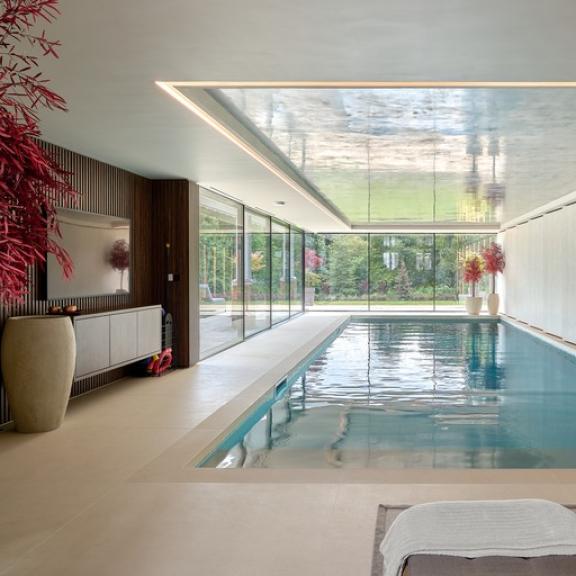Creating a complaints procedure
A complaints procedure is highly recommended for every interior design practice. We asked solicitor Oliver Johnson of Boodle Hatfield to explain why.

If you have your own interior design practice, you should put a complaints procedure in place. A complaints procedure benefits both designer and clients, speeds up resolution if issues arise, and signals your professionalism. We asked Oliver Johnson, associate solicitor at BIID industry partner Boodle Hatfield, to explain why setting one up is valuable and what it should contain.
Why have a complaints procedure?
Rather than dealing with complaints individually as they arise, designers should create a formal structure. ‘It is crucially important that interior designers have a complaints procedure,’ explains Oliver.
‘I think there are three key benefits to having a formal procedure: the interior designer and the client will know what to do, which means issues can be resolved more easily, effectively and efficiently; a consistent approach allows the interior designer to deal fairly with its clients across the board; and where complaints are handled properly, a good system can improve the reputation of an interior designer.
‘A proper procedure also enables interior designers to identify failings in their own systems, policies and working practices. Only by understanding the issues behind complaints and handling them correctly can an interior designer help prevent complaints reoccurring or escalating.
How to set up a complaints procedure
Professional advice is advisable when setting up a complaints procedure. ‘I would always recommend instructing a solicitor to prepare a bespoke form of complaints procedure,’ says Oliver. ‘I’m sure general procedures and policies are available on the internet but speaking to a solicitor to get guidance on a complaints procedure prepared specifically for your business is invaluable as they can assist with ensuring it deals properly with all the various natures of your business.
‘The way that you work, the nature of your projects and your clients will all have differing requirements and expectations that need to be specifically catered for – there is no one size fits all product that can offer interior designers the proper protection.
‘I would also strongly recommend that interior designers take legal advice to ensure that the forms of contract they enter into contain appropriate complaints handling and dispute resolution drafting. The RIBA/BIID domestic professional services contract 2020 for interior designer services is fantastic but it refers strictly to the interior designer’s own internal complaints procedure. If an interior designer doesn’t have a proper internal complaints procedure, then the client is likely to have to take the next step in the dispute resolution process which would be straight to mediation, adjudication, arbitration or litigation. So having a proper complaints procedure can prevent complaints from escalating into significantly more extensive disputes.
‘I cannot stress it enough, but prevention is better than cure. Instructing a solicitor in the first place to prepare a proper complaints procedure or to provide you with your own form of bespoke consultant appointment is considerably more cost effective and less stressful than having to instruct one after something goes wrong.’
Elements of a complaints procedure
As for what all complaints procedures should contain? ‘Every interior designer’s requirements will slightly differ, but I would expect any good complaints procedure to deal with the following,’ explains Oliver:
- Details of how to make a complaint and the person to contact
- Details of how the complaint will be processed (ie when will it be acknowledged, when will a response be provided and what information needs to be provided by the complainant?)
- Details of how the matter will be resolved and what the process of considering the claim consists of
- Details of the next steps if the complainant is not satisfied with the outcome of the complaint process.
One other element is crucial for BIID members. ‘The complaints procedure should also refer specifically to the BIID code of conduct which details the principles and ethical standards for members of the Institute,’ says Oliver.
How to communicate the complaints procedure
How and when the complaints procedure is communicated is also important. ‘Ideally the complaints process should be published on the interior designer’s website; this allows it to be viewed by all parties and also means that the interior designer can periodically update the procedure or policy without having to email all of its clients,’ says Oliver.
‘I would also recommend that a copy of the procedure is issued in writing to every client at the point that they enter into contract and that it is made clear to clients that the procedure is detailed on the interior designer's website and is subject to further amendment/updating.’

What happens if the procedure doesn’t provide resolution?
It can be the case that the complaints procedure does not provide an end to the matter, and you should prepare for this eventuality. ‘Complaints procedures should always specifically deal with the next steps should the process not resolve the situation,’ says Oliver. ‘There are various types of alternative dispute resolution available before the interior designer and client must go to court and each has their own merits and detriments. However, I would recommend that a complaints procedure should specifically allow for the matter to be referred to mediation or adjudication if the complaint is not resolved.
‘Mediation is a consensual process in which a third party mediator assists in a negotiation process. It can be initiated at any time agreed between the parties and allows contractual relationships to be maintained during and after the dispute, but it does not guarantee a resolution and is non-binding in any case. Adjudication, by contrast, is a statutory dispute resolution method whereby the parties submit their claim and defence to a third party adjudicator who gives a formal decision on the basis of the documentary papers submitted.
‘At that stage, I would again suggest instructing a solicitor who can advise on the appropriate forum of dispute resolution and can assist in bringing the matter to a satisfactory close.’
Set up a complaints procedure
Having a complaints procedure in place is highly advisable when running your own interior design practice and setting one up isn’t onerous. If you need legal help with your small business, the BIID offers members a legal helpline which provides them with a free 30 minute telephone consultation for each issue.
BIID Members can find more information on accessing free legal advice here.
Explore new resources from the BIID. Seeing a padlock? Just login or become a member to view.
View the highlights from our 60th anniversary party
We asked Anna Burles: What makes the perfect software?
Discover the smart home technology awards with Platinum Partner, CEDIA
Explore the latest, member-exclusive, templates designed to make your life easier.
University of Gloucestershire wins the BIID Student Design Challenge 2025.





